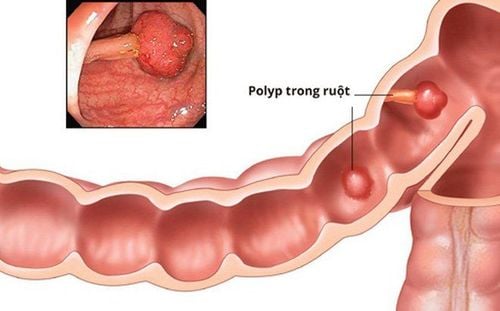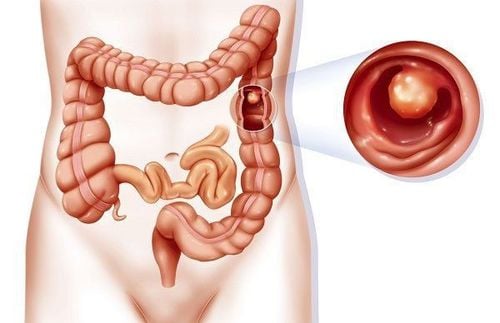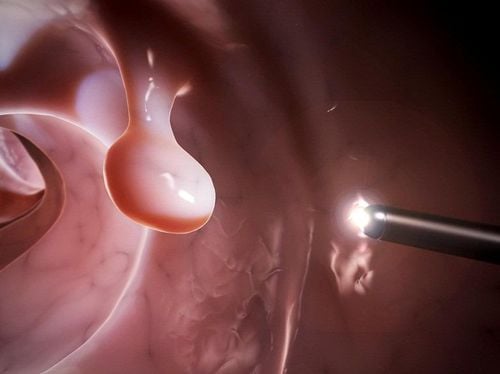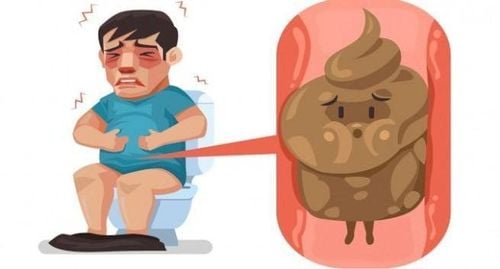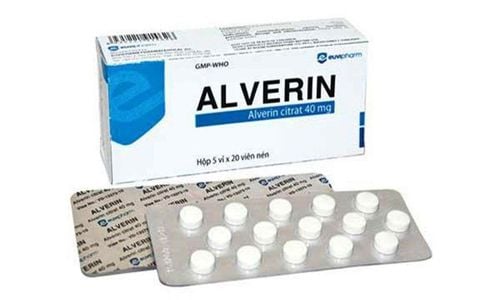This is an automatically translated article.
Posted by Master, Doctor Mai Vien Phuong - Department of Examination & Internal Medicine - Vinmec Central Park International General Hospital
Laparoscopic resection of large (≥ 20mm) pedicleless colorectal lesions (LNPCLs) can lead to major adverse events, such as late bleeding (late bleeding) and late perforation, despite closure. mucosal defects by forceps. Topical application of mulch refers to the creation of a shield using a biocompatible medical device (tissue or hydrogel) with proven bioactive properties. Coverage after laparoscopic resection provides coverage protection to prevent late complications.
The application of mulching agents is the simplest and most rapid technique for the protection of large mucosal defects. Published data have confirmed their efficacy in preventing late adverse events in patients with pedicelless colorectal lesions, particularly those proximal to an increased bleeding risk. up at least 2 times.
1. The problem of closing mucosal defects after colon polypectomy
Laparoscopic resection of precancerous colorectal lesions is one of the most frequently performed medical interventions, significantly reducing the risk of colorectal cancer and death. . Large (greater than 20mm) colorectal lesions (large pedicleless colorectal lesions) represent the highest risk of cancer and their careful, complete, and timely resection is particularly important. Laparoscopic resection of these lesions can lead to major adverse events, such as delayed bleeding and delayed perforation, especially in high-risk patients. Endoscopic resection of deep lesions, despite closure of mucosal defects with endoclip forceps. According to studies, the clip cannot be closed completely in 40% of cases due to its large size or poor accessibility. The risk of late bleeding ranges from 1% to 12% (1.5% with complete closure, 9% with partial closure, and 12% with failed closure), while the risk of bleeding late is about 1%.
2. The routine use of prophylactic endoscopic clipping does not reduce the overall risk of postoperative bleeding.
On the other hand, endoscopic coagulation prophylaxis of visible vessels is not effective in preventing clinically significant late bleeding. Topical application of mulch refers to the creation of a biocompatible medical device (tissue or hydrogel) coating film with proven bioactive properties. Coverage after laparoscopic resection provides coverage protection to prevent late complications. A comprehensive understanding of the pathogenic mechanisms of action involved is required to address these challenges. The aim of this review is to systematically collect and review the existing literature regarding the prevention of late bleeding and late bleeding with coatings after endoscopic mucosal resection. EMR) or endoscopic submucosal dissection (ESD) of large pedicleless colorectal lesions.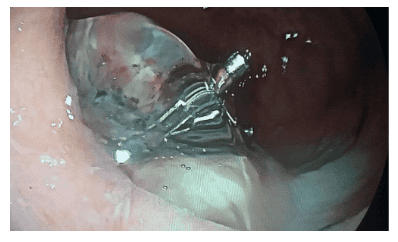
3. What do the studies say?
A comprehensive PubMed search was performed to identify articles in English. The search strategies and keywords are as follows: (1) (“Endoscopy” [All Areas] AND (“On-Site Application” [All Areas]); (2) (“Damagement”) major colorectal injury” [All areas] AND “EMR” [All cases] OR “ESD” [All cases]); and (3) (“Delayed bleeding” [All cases] cases] OR “late perforation” [All cases]).
Eight studies were identified with 191 patients included in the case series Agents tested were: Polyglycocolic acid sheet with colloidal fibrin (PGA-FG), Surgicel, platelet-rich plasma (PRP), Purastat and cyanoacrylate All of these measures demonstrate biosafety after clinical experience.
4. Material Surgicel Fibrillar
Surgicel Fibrillar, an oxidized regenerated cellulose that swells to a viscous mass, was the second agent studied to reduce late complications in a large case series of 49 patients with colorectal ESD, using a layer of this substance diluted in 10mL of normal physiological saline through a special nebulizer catheter. Surgicel supports clot formation after blood saturation, acts as a hemostatic aid, and has a local bactericidal effect due to its low pH of 3.4-3.7. To evaluate the efficacy of the application of Surgicel, a retrospective comparison with 52 other pedicleless large colorectal lesion patients who underwent conventional ESD was performed. All lesions were successfully covered and the covering procedure was less time consuming (5 min). During follow-up, re-bleeding occurred in 0 (0%) patients and 4 (7.7% in controls) patients.Post-resection syndrome (PPS) was observed in 3 patients (6.1%) treated with Surgicel, compared with 17 (32.7%) in the group not receiving Surgicel. In the 20 patients treated with this product, a follow-up endoscopy was performed the next day, and Surgicel retained the defect in all cases. Based on this, the authors speculate that the reduced inflammatory response is related to the masking and endotoxin-reducing effects due to the bactericidal properties of this agent, which acidifies the medium.
5. Autologous Platelet Gel PRP
PRP, also known as autologous platelet gel, has confirmed powerful healing properties compared with eschar after EMR in preclinical models. Platelets play a fundamental role in hemostasis and are a natural source of growth factors. The PRP solution contains at least 2 times the number of peripheral blood platelets and large amounts of growth factors important for reheating, which are released from alpha particles of activated platelets.
The use of PRP is justified in the exponential release of multiple pleural factors, which enhance physiological healing and hemostasis, with a very low risk of fibrotic or severe healing. In clinical practice, PRP is used as a mulching agent to prevent late complications in a small number of patients with very large lesions located in the rectum (mean size 54 mm). PRP was obtained from a patient blood sample (18-36 mL) drawn at the time of endoscopy. Late bleeding occurred in 1 out of 4 lesions that did not require blood transfusion or endoscopic treatment. PRP also showed a very high rate of mucosal healing after 4 weeks (79%), a very fast application time (2 min), and the force required to infuse the product appropriately, comparable to saline. However, the number of patients was too small to draw any conclusions about efficacy and there was a lack of controlled data.
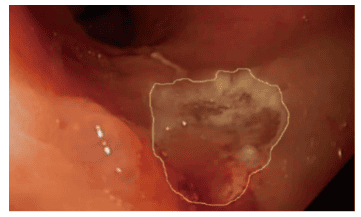
6. PuraStat . Materials
PuraStat has also been tested to prevent late bleeding after laparoscopic resection of a large pedicleless colorectal lesion. This agent is a fully synthetic substrate built from a chain of three amino acids rather than linked together to form a peptide. It forms a transparent gel on contact with blood or tissue fluid, consisting of a network of nanofibers that form the extracellular matrix, providing a physical barrier to hemostasis by blocking blood vessels. Three case series (single-arm intervention study) and one randomized clinical trial were reported in 113 patients with pedicleless large colorectal lesions. The entire lesion surface was completely covered with a dose of 3 mL in a mean time of 2 min. Clinically significant delayed bleeding occurred in 4.4% of patients (range 0%-12%). The worry with this gel is that it has to be applied through a special catheter, which is affected by gravity and slowly slides off the ulcer after application. Aspiration after placement of the material seems to be effective in applying the gel to the entire skin area with less migration.
7. Cyanoacrylate materials
Recently, cyanoacrylate was evaluated in a two-arm study. Two groups of fifteen patients with undescended large colorectal lesions were compared for evaluation of early and late bleeding after EMR combined with modified cyanoacrylate glue (N-butyl-2-cyanoacrylate + methacryloxysulfolane-Glubran 2 ® ) compared with EMR alone. Cyanoacrylate is a strong and fast acting synthetic adhesive with sealing, adhesion and coagulation properties that rapidly polymerizes in the presence of water to form long and durable chains. Based on these properties, it has been widely used in surgery, and for the primary and secondary prevention of bleeding from gastric varices. The agent was applied using a Teflon 7 Fr spray cannula. No cases of premature bleeding were reported in either group. Two cases (13.3%) of late bleeding were readmitted to the hospital and repeat endoscopic resection with hemostatic forceps was performed in patients with EMR alone, compared with no cases of late bleeding in shielded group
Conclusion
The use of mulching agents is the fastest and simplest technique for covering major mucosal defects, and published data seem to confirm their effectiveness in prevention of late complications. However, most of the reports were case series, with no control arm and relatively short follow-up. There is a lack of randomized controlled trials and head-to-head comparison studies of shielding products.
Please dial HOTLINE for more information or register for an appointment HERE. Download MyVinmec app to make appointments faster and to manage your bookings easily.





